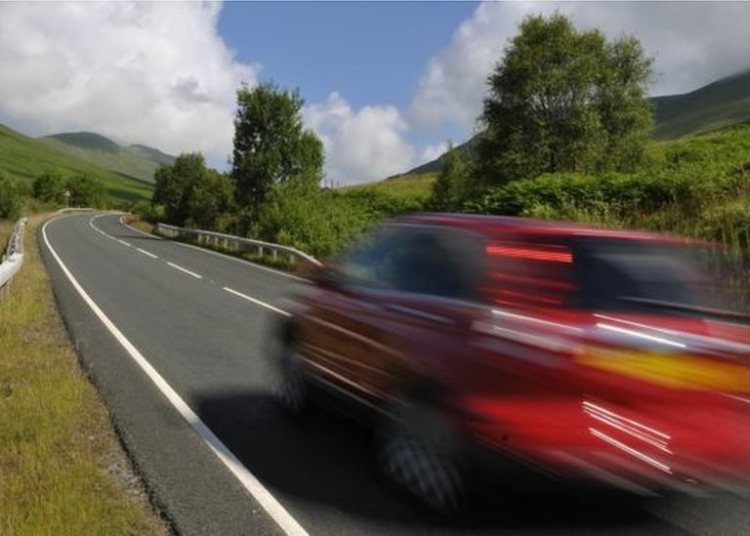In September 2022, my piece titled, A BLACK SUNDAY NIGHT IN SEPTEMBER, captured the tragedy that befell 19people who were burnt beyond recognition along the Yangoji Gwagwalada route in the Federal Capital Territory. Three vehicles were involved in that crash caused by excessive speeding and wrongful overtaking. The crash occurred on 18 September at about 0040hours.Please I won’t bore you with the details as you can read the full story online.
Just last Sunday, there was another tragedy. It involved ten happy and exciting family. All siblings, including their Parents. Their mission was a home coming to celebrate with loved ones who were tying the knot. The ceremony was meant to be filled with excitement and laughter, but sadly the story which is real ended on a tragic note. All ten members of the same family died in one road traffic crash shortly after the wedding on the Kaduna-Kachia highway while returning from a wedding in Kano State.
It was gathered the victims’ vehicle had a head-on collision with a lorry conveying firewood. A witness said that all the victims were Kano indigenes who resided in Kachia town. I knew most of them, he said and noted that they went to their home town in Kano for a wedding and on their way back to Kachia town. The saloon Gulf they were travelling in collided with a lorry conveying firewood killing all the ten members of the family on the spot.
The road traffic crash according to the Federal Road Safety Corps was attributed to dangerous overtaking which led to the driver losing control. Meanwhile the Gulf car was overloaded at the time of the crash. Among the ten family members were eight men and two boys. As I write this piece I recall the position of the Corps against overloading as well as the infractions caused by Gulf car drivers.
I am sure you read the story involving the BRT BUS and a moving train at Shogunle area of Ikeja, Lagos. I hear that no fewer than seven persons have been confirmed dead while others sustained injuries. This avoidable crash saddens me and I pray for those who died as well as for God Almighty to comfort their families. It is not my usual style to write on such when the incident is still fresh but have chosen to for once look at the issues. But how did the avoidable crash involving a bus that is expected to be the safest for commuters occur? A survivor according to reports revealed that they begged the driver to wait for the train to pass but he refused.
Another survivor who corroborated the above narrated that she boarded the bus to work stating that the incident happened around 7.15am.According to her, when we got to the intersection at PWD in Ikeja, the driver continued driving .Passengers inside the bus including myself begged him to wait for the train to pass before crossing but he didn’t listen.. Another witness who recounted the incident too, said I think the fault is from the driver because before a train gets to a level crossing, it begins to horn from a kilometre away and if you are a good driver, you should be aware of the loud horn alerting people.
The story I cherish most was from a male witness who said that the keepers of the Nigerian Railway Corporation at that level crossing tried to stop the driver from passing because of the incoming train, but he refused. I guess he thought he could pass before the train caught up with him. Unfortunately, the reverse was the case.
When I read of the incident, I was stunned to hear that the appropriate iron bars that must be installed at railway level- crossing were not there to prevent trains from running into vehicles. Was there an advanced warning that should be given when a train is passing?
Between the first and second crash, we are dealing with the risk driving behaviour of excessive speeding, overloading as well as dangerous driving. But what really is the best practice at railway crossings?. When I sourced for the best safety practice at railway crossings these are my findings. Like the BRT driver, many others tend to pay little or no attention at highway railway crossings simply because they drive there daily without seeing a train and so throw caution to the wind which is risky and dangerous.
I have chosen to publish verbatim what I sourced with very minor additions or commentary. First you must know that trains can be on any track, at any time, going in either direction. When locomotive engineers see a vehicle or person on the tracks in the path of their train, they can only sound the warning horn and apply the emergency brakes.
A train in emergency braking will stop, but not in time to avoid this collision. The average freight train consisting of 100 cars and weighing anywhere from 12 million to 20 million pounds takes over a mile to stop in emergency braking. There are brakes on every wheel, but it takes that long for all of those brakes to overcome the momentum of the tremendous weight pushing the train.
Secondly, always yield the right of way to the train which the BRT driver failed to do hoping he would outrun the train. The train cannot yield to you. More than half of all motor vehicle-train collisions occur at crossings equipped with the automatic signals. It’s because some drivers choose to drive around the gates or through the flashing red lights because they believe they can beat the train, or they assume a stopped train has activated the signals or the signals are malfunctioning.
The third which I hear the BRT driver also fell short of, is, never ignore active warnings at crossings. Locomotives are huge;17 feet high and 10 feet wide. As a result, they appear to be traveling much slower than we think when viewed from a slight angle at the crossing. The combination of the size and angle create this illusion. The parallel lines of the rails converging toward the horizon contribute to the illusion and fool our minds into thinking the train is farther away than it actually is. It is virtually impossible to accurately judge the speed of a train when these combinations of illusions are present.
The fourth which the BRT driver was guilty of as testified by a witness is that trains will arrive at a crossing faster than you anticipate. One in four crashes occurring at highway-rail crossings takes place when vehicles run into the side of the train. Often, it’s because the vehicle is traveling too fast for conditions, such as darkness, rainy weather or fog. Many drivers “overdrive their headlights.” This means driving too fast to be able to stop in the distance illuminated by your headlights. By the time drivers see the train at the crossing, it’s too late to avoid the crash. In other instances, there may be high levels of noise in the vehicle, which distracts the driver from noticing the train’s warning devices.





